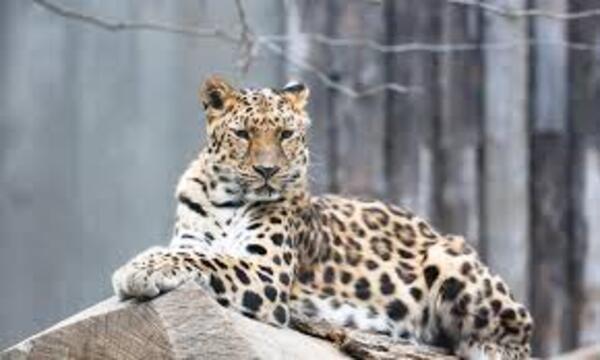Some animals prefer solitude to group living, thriving in isolation and relying on their unique survival skills to navigate the wild. These solitary creatures are fascinating for their resilience, adaptability, and independence. In this article, we’ll dive deeper into their world, exploring why and how they lead such lives.
Solitary animals are those that live most or all of their lives alone, interacting with others of their species only during mating seasons or while raising offspring. Unlike social animals, they do not form herds, packs, or colonies.
Territorial Nature: Solitary animals usually maintain exclusive territories, marking boundaries to ward off others of their species.
Self-Reliance: They rely entirely on themselves for hunting, foraging, and avoiding predators.
Minimal Social Interaction: Solitary animals typically engage in social behavior only for mating or during parenthood.
Adapted Physiology: Many solitary animals have evolved unique physical and behavioral traits to enhance survival without group support.
By living alone, they reduce competition for resources and focus entirely on their survival.

Tigers are apex predators and some of the most well-known solitary animals.
Territorial Behavior: Each tiger maintains a large territory, sometimes spanning hundreds of square miles. These territories overlap only during mating or when a mother is raising cubs.
Hunting Skills: Tigers hunt alone, using stealth and strength to ambush prey. Their solitary hunting ensures they don’t have to share food.
Cub Rearing: Female tigers raise their cubs independently, teaching them survival skills before the cubs disperse to establish their territories.

Leopards are versatile and thrive in various habitats, from savannas to dense forests.
Elusive Nature: They are incredibly stealthy, using trees for camouflage and rest, minimizing exposure to predators or rivals.
Unique Hunting Style: Leopards often drag their prey up trees to prevent scavengers from stealing their kills, a behavior that highlights their solitary instincts.
Territory Management: They fiercely guard their territories, with minimal overlap except during mating.

Living in the rugged terrains of Central Asia, snow leopards are elusive and highly independent.
Remote Habitat: These animals thrive in mountainous regions with sparse vegetation and limited prey, necessitating solitude to ensure enough resources.
Camouflage Mastery: Their pale, spotted coats blend perfectly with the rocky landscape, helping them remain undetected by predators and prey.
Adaptations for Survival: Snow leopards can leap great distances, an essential skill for solo hunting in challenging terrain.

Sloths, known for their slow pace and arboreal lifestyle, are quintessential solitary animals.
Energy Conservation: Their low-energy diet of leaves requires minimal movement, which is better achieved without competition.
Camouflage and Defense: Algae grow on their fur, blending them into the canopy and protecting them from predators.
Independence from Birth: Sloth babies leave their mothers early, adapting to a solitary life quickly.

Despite their lovable appearance, giant pandas are solitary and territorial.
Dietary Needs: A panda’s diet of bamboo, which is low in nutrients, necessitates solitary living to ensure sufficient resources.
Communication: They use scent markings and vocalizations to communicate, especially during the mating season.
Short-Term Socializing: Apart from mating and brief parental care, pandas avoid prolonged interactions.

Koalas are native to Australia and spend most of their lives in eucalyptus trees.
Specialized Diet: Eucalyptus leaves, their primary food source, are low in nutrients. Koalas live alone to reduce competition for these leaves.
Minimal Energy Expenditure: They spend up to 20 hours a day sleeping, conserving energy.
Territorial Independence: Each koala occupies a specific range of trees and avoids overlapping with others.

Polar bears are the largest land carnivores and highly adapted to solitary living in the harsh Arctic.
Vast Ranges: A single polar bear may roam hundreds of miles in search of food, making social living impractical.
Efficient Hunting: Hunting seals on ice requires stealth and patience, better achieved alone.
Cub Dependence: Cubs stay with their mothers for about two years before venturing out independently.

Lynxes, medium-sized wild cats, are expert hunters and highly territorial.
Habitat Preference: Found in forests and tundras, lynxes rely on their acute senses to hunt small mammals.
Territorial Marking: They use scent markings and scratches to define their territories.
Solo Parenting: Female lynxes care for their young until they’re self-sufficient.
Solitary living ensures better access to food, water, and shelter without competition.
Many predators, like tigers and leopards, hunt more effectively alone, relying on stealth rather than group tactics.
Solitary lifestyles reduce the risk of disease transmission, crucial for species living in challenging environments.
Some species have evolved to thrive independently, developing behaviors and traits tailored to solitary survival.
Better Resource Control: Solitary animals have exclusive access to their territories’ resources.
Reduced Competition: They avoid rivalries for food, mates, and shelter.
Adaptability: Living alone allows them to adapt quickly to environmental changes.
Enhanced Survival Skills: Solitary animals develop sharper instincts for hunting, foraging, and evasion.
Many solitary predators, like leopards and snow leopards, rely on camouflage to hunt or evade detection.
Solitary prey animals develop unique defenses, such as the armadillo’s armor or the sloth’s immobility.
Mothers in solitary species, like tigers and pandas, invest heavily in raising self-reliant offspring.
While group-living animals benefit from collaboration and protection in numbers, solitary animals excel in resource management, independence, and adaptability. Both lifestyles represent unique evolutionary paths.
Solitary animals showcase the incredible diversity of life on Earth. From the regal tiger to the elusive snow leopard, these creatures thrive through resilience and self-reliance, reminding us of the beauty and complexity of nature’s survival strategies.
animal tags: Lynxes
We created this article in conjunction with AI technology, then made sure it was fact-checked and edited by a Animals Top editor.